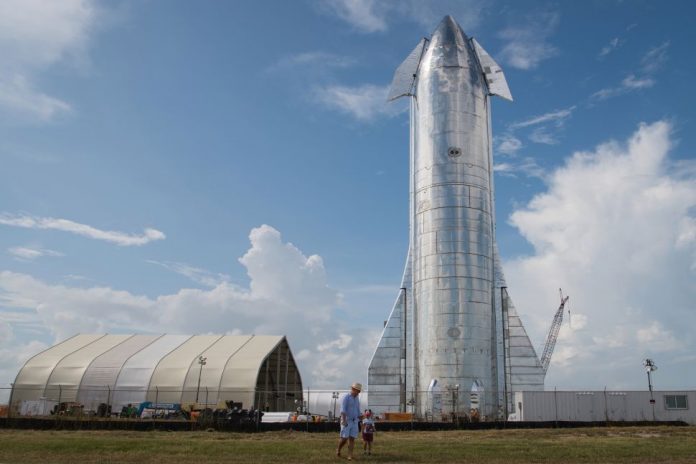
A month after SpaceX’s SN9 flew more than 6 miles (10 kilometers) high, its successor, SN10, duplicated the feat, flying high above Texas before nailing the landing — a first for the prototype.
SN10 is the third such developmental prototype of Starship, Elon Musk’s next-generation rocket destined for the moon and Mars, to make a high-altitude flight since the mesmerizing flight and explosive ending of SN8 in December 2020. SN9 flew high and then crash-landed and exploded on Feb. 2.
The third try was the charm for SN10.
SN10 reached its targeted altitude of 6 miles, cutting off each engine in series on the way up to throttle down and hit the desired apogee. The rocket then began an extended picturesque period of free fall — a “belly flop” as it has come to be known — before firing the engines back up to perform its trademark flip maneuver to make a vertical landing. After a six-minute journey, SN10 came to rest on the pad at SpaceX’s facility in Boca Chica.
It didn’t seem like a perfect landing and there seemed to be a slight lean in the Starship’s massive stainless steel frame, but it didn’t tip over. Then, approximately 10 minutes after the landing, the Starship exploded. Flames erupted from the bottom of the vehicle and sent it for an unscheduled second trip into the sky.
SpaceX founder Elon Musk has said the SN Starship series is designed to eventually reach orbit, hopefully sometime in the next year. The last two high-altitude flights of these prototypes have both triggered investigations from the Federal Aviation Administration. The FAA said that SN8 was launched in December without the official green light from the agency. This led to an investigation and corrective actions that delayed the flight of SN9.
SN9’s crash landing was considered a “mishap” by the FAA and it initiated a routine investigation. Last month the FAA announced that all investigations had concluded and it was comfortable the launch of SN10 could proceed safely.
The rockets that have flown during these past three high-altitude tests are scaled-back versions of the final Starship that Musk hopes to send out into the solar system. For a trip to Mars, a final Starship will be placed atop a massive Super Heavy booster that will do the serious lifting to get beyond the grasp of Earth’s gravity well.
In other words, if the Starship development program continues to advance, we haven’t seen anything yet.
(CNET)





















